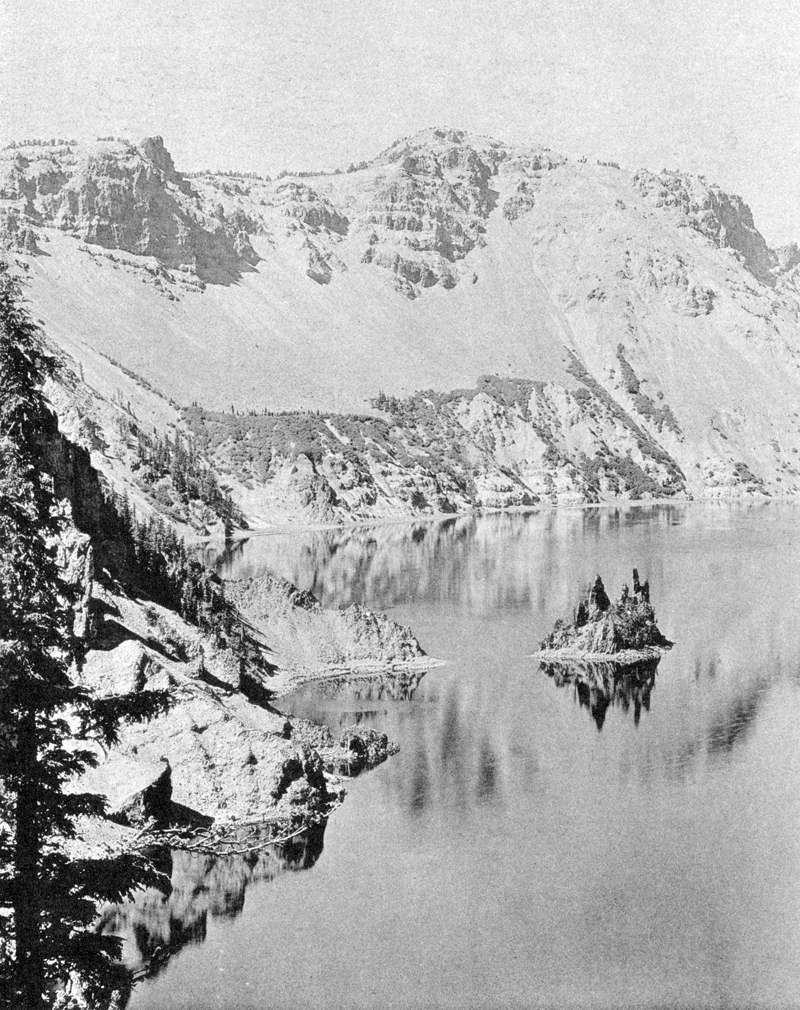If the form of the caldera provides no support for the explosion theory, does it offer positive as well as negative evidence in favor of the alternative theory of collapse? Some geologists will allow that the steepness and height of the walls are in themselves a positive argument, and some will accept the evidence of soundings for the existence of submerged fault scarps. Some will point to the large, flat-topped bench overlooking Chaski Bay as a landslide block caught, as it were, in the act of engulfment, for the lavas composing the bench dip lakeward and they must have slid to their present position from a level several hundreds of feet higher up the caldera wall (plate 19, figure 3). Yet there is no denying that even if the caldera was formed by explosion, insliding of the walls and later faulting of the floor may well have occurred. And even if subsequent soundings should reveal the presence of more or less concentric faults close to the caldera margin, the question of their age would still remain for debate. In a word, though the presence of faults is essential to the theory of collapse, it is not conclusive proof that the caldera was produced solely by engulfment. Obviously, downsinking and insliding of the walls may also follow explosion. It is therefore on the negative evidence already presented that principal reliance must be placed. Fortunately, that evidence is so strong as to admit of little doubt.
|
Plate 19. Fig. 3. View from Kerr Notch. Beyond Phantom Ship, at the foot of the caldera wall, is the Chaski landslide block, above which tower Applegate and Garfield peaks. (Photograph by George Grant, National Park Service.) |
***previous*** — ***next***


